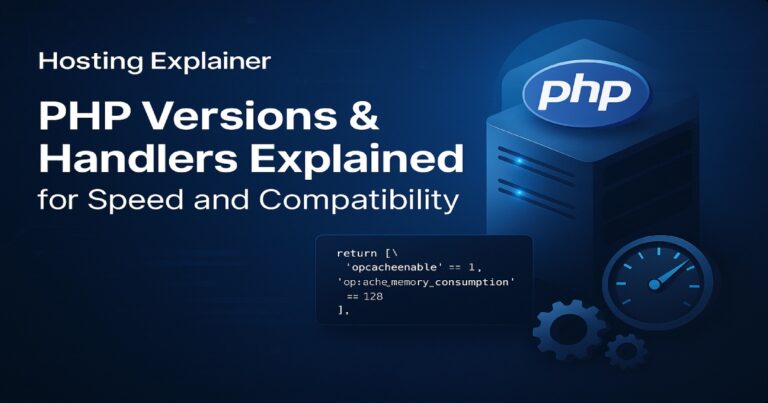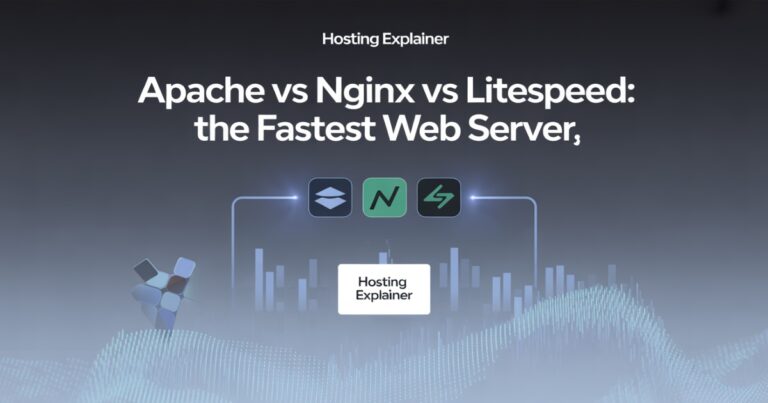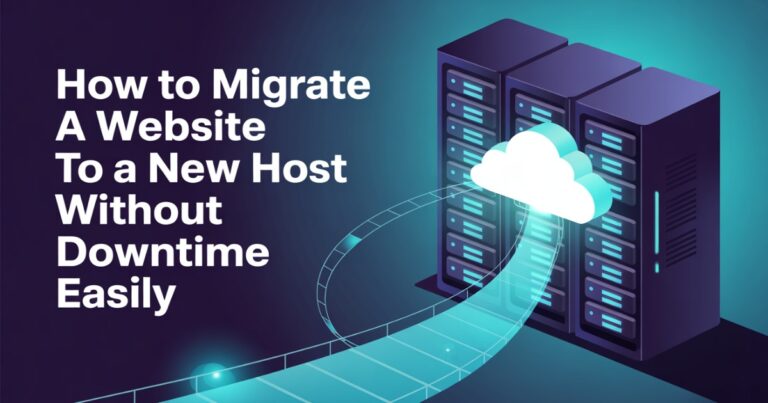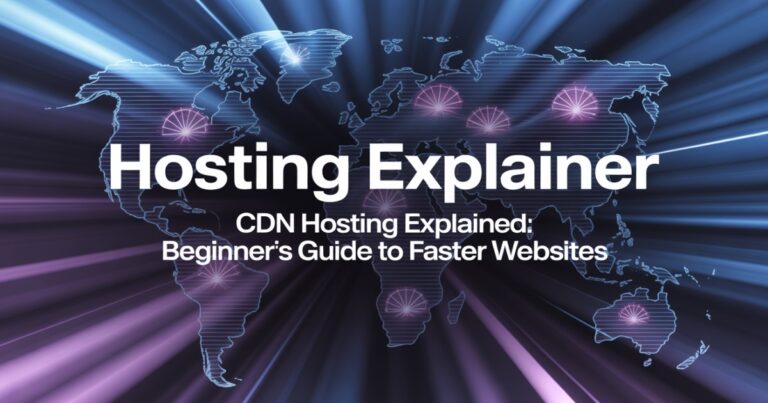DDoS Protection in Hosting: What It Is and Why It Matters
A website is like your online home. But imagine if a crowd of fake visitors tried to storm your doors all at once, making it impossible for real people to get in. That’s what a DDoS attack does, and it can knock your site offline within minutes.
I’ve seen this happen to small business owners who thought they were “too small” to be targeted. The truth is, anyone with a website can be hit. That’s why DDoS protection in hosting isn’t just for big corporations.
In this guide, I’ll explain what DDoS protection is, how it works in hosting, and why it’s critical for keeping your site safe and trustworthy.
What Is a DDoS Attack, and How Does It Affect Hosting?
A Distributed Denial of Service (DDoS) attack happens when thousands of fake requests hit your server at once. The goal is simple: overwhelm the system until it can’t respond.
Think of it like a café filled with fake customers who never order. Real customers can’t get through the line, and the business loses sales.
When this happens to a website:
- Pages load slowly or not at all.
- Search rankings drop if downtime continues.
- Visitors lose trust and may never return.
Even a 10-minute attack can cost an eCommerce site hundreds in lost sales. Longer attacks may take hours or days to recover from. For bloggers and content creators, the damage is reputational: readers move on and may not come back.
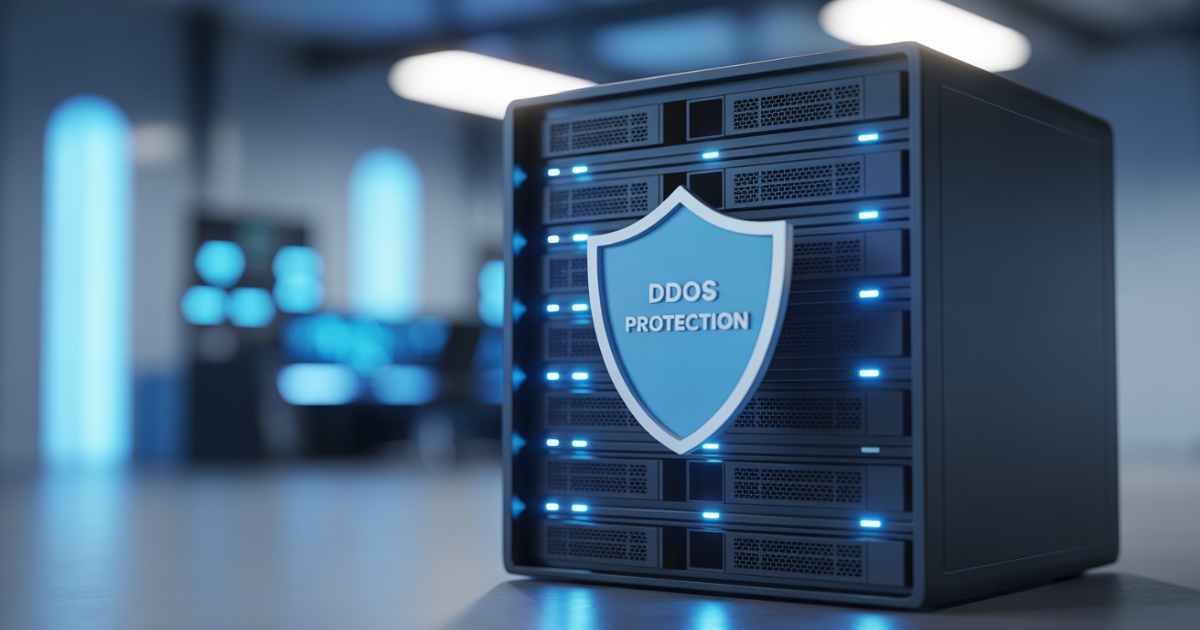
What Is DDoS Protection in Hosting?
Now that we know what an attack looks like, let’s talk about protection. DDoS protection in hosting is a set of tools and systems built into your web host to block fake traffic before it reaches your site.
It works by filtering requests, analyzing patterns, and making sure only legitimate users get through. Good hosting providers also use firewalls, load balancers, and CDNs to spread traffic safely.
Without this, your website is like an open door with no security guard. With it, you have a system that notices suspicious behavior, shuts it down, and keeps your website running.
Hosting with DDoS protection for websites acts like a digital bouncer at the door, keeping attackers out while welcoming real visitors.
Why DDoS Protection Matters for Websites and Businesses
Some people think downtime is “just a few hours,” but it can cost far more than you expect. Here’s why protection matters:
- Revenue Loss: If you run an online shop, every minute offline means lost sales.
- Trust: Customers won’t return to a site that feels unsafe.
- SEO Rankings: Google notices downtime, and it hurts your visibility.
- Brand Reputation: A single attack can create long-term damage.
I’ve worked with clients who only realized the value of DDoS protection after an attack. By then, recovery was more expensive than prevention. Think about it this way: you insure your car even if you’ve never had an accident. DDoS protection is the same type of safeguard for your website.
Types of DDoS Attacks Hosting Providers Defend Against
Not all DDoS attacks are the same. Hosting providers protect against several types:
Volumetric Attacks
These flood a site with fake traffic. It’s like trying to fit 10,000 people into a room built for 100. They are the most common form and are often measured in Gbps or Tbps of data.
Protocol Attacks
These exploit weaknesses in servers or firewalls, draining resources until the system crashes. A SYN flood is a good example, where attackers overload the system with half-open connections.
Application Layer Attacks
These target specific parts of your site, like login pages or checkout forms. They are harder to spot because they mimic normal traffic but at scale.
Multi-Vector Attacks
Some attackers combine all three types to overwhelm every layer of protection. These are more complex but increasingly common.
Knowing the type of attack helps you see why layered protection is so important.
How DDoS Protection Works in Hosting
At this point, you might be wondering: how does the actual protection work? Here’s the simple breakdown:
- Traffic Monitoring: Constantly checks for unusual spikes.
- Filtering: Blocks suspicious or repetitive requests.
- Load Balancing: Spreads traffic across multiple servers to avoid overload.
- Scaling: Cloud hosting can automatically adjust resources during an attack.
Some hosting providers also rely on AI-based detection to identify unusual traffic patterns faster. Others use partnerships with global mitigation networks to reroute traffic through “scrubbing centers” that clean out malicious requests before they ever hit your server.
Hosting Options with Built-in DDoS Protection
Different hosting types offer different levels of protection:
Shared Hosting
Basic, but limited, protection. You share resources, so if one site gets hit, others can be affected too.
VPS Hosting
More control and better defenses. You get isolated resources, making it safer than shared hosting.
Dedicated Hosting
Stronger protection, customizable security settings, and higher performance.
Cloud Hosting
Highly scalable with advanced, automatic DDoS protection features.
| Hosting Type | DDoS Protection Level | Best For |
| Shared | Basic, limited | Small sites |
| VPS | Moderate | Growing businesses |
| Dedicated | Strong, customizable | Large sites or apps |
| Cloud | Advanced, scalable | High-traffic websites |
For most small businesses, VPS or cloud hosting is the sweet spot. Shared hosting is cheap but risky, while dedicated servers are powerful but expensive.
What to Look for in a Hosting Provider with DDoS Protection
When choosing a host, don’t just look at price. Focus on these features:
- Real-time attack monitoring.
- Layer 3, 4, and 7 protection.
- Traffic filtering and rate limiting.
- Integration with CDN and WAF.
- 24/7 expert support.
Also, check if the provider has a clear SLA (Service Level Agreement) that guarantees uptime even under attack. Transparency is key. In my experience, the best hosts are open about how many attacks they handle each month and what their success rate looks like.
Costs of Hosting with DDoS Protection: Is It Worth It?
Yes, protected hosting often costs more. But let’s weigh it:
- Standard hosting: $5–$10 per month.
- Hosting with DDoS protection: $15–$50 per month.
- Cost of downtime during attack: Thousands in lost revenue.
Some enterprise-level solutions cost hundreds per month, but for most small businesses, affordable plans with built-in protection are enough. The hidden cost of not having it is often worse: lost SEO rankings, refunds to angry customers, or even paying ransomware if attackers hold your site hostage.
For me, the answer is simple: prevention is cheaper than repair. Even for small businesses, the investment is worth it.
How DDoS Protection Saved a Website
A client of mine ran a mid-sized eCommerce store. One weekend, their site was hit by a volumetric attack. Without protection, they would have been offline for days.
Instead, their cloud hosting with built-in DDoS mitigation detected the traffic spike, filtered it out, and kept the site online. Customers never noticed. The only sign of the attack was in the traffic logs.
In another case, a small news blog on shared hosting wasn’t as lucky. A DDoS attack took it offline for 48 hours. They lost ad revenue and regular readers, and their Google rankings slipped. That experience pushed them to upgrade to a VPS with protection.
That’s the difference with protection. An attack can feel like a minor bump, not a full crash. Without it, the impact can be devastating.
FAQs – DDoS Protection in Hosting
1. How does DDoS protection work in hosting?
It filters fake traffic, balances loads, and scales resources to keep your site online.
2. Can shared hosting protect against DDoS attacks?
Shared hosting offers basic protection, but it’s limited. For better safety, VPS, dedicated, or cloud hosting is recommended.
3. Which hosting type is best for DDoS protection?
Cloud hosting is the strongest due to its scalability. Dedicated servers are also highly reliable.
4. Do I need extra DDoS protection if I use Cloudflare or CDN?
Yes. While CDNs add a strong layer, having DDoS protection built into hosting provides a safer foundation.
5. How much does DDoS-protected hosting cost?
It usually ranges from $15 to $50 monthly, depending on the plan and features.
6. What’s the difference between a firewall and DDoS protection?
A firewall blocks unauthorized access. DDoS protection focuses on managing and filtering heavy fake traffic loads.
Why DDoS Protection Should Be Non-Negotiable in Hosting
DDoS attacks are more common than many think. They don’t just target big brands; small sites are often easier targets. That’s why DDoS protection in hosting isn’t optional; it’s essential.
In my experience, the peace of mind alone is worth the cost. With the right hosting provider, you’re not just buying server space. You’re buying resilience, trust, and long-term stability.
If your website matters to you, protecting it from DDoS attacks should be at the top of your hosting checklist.


